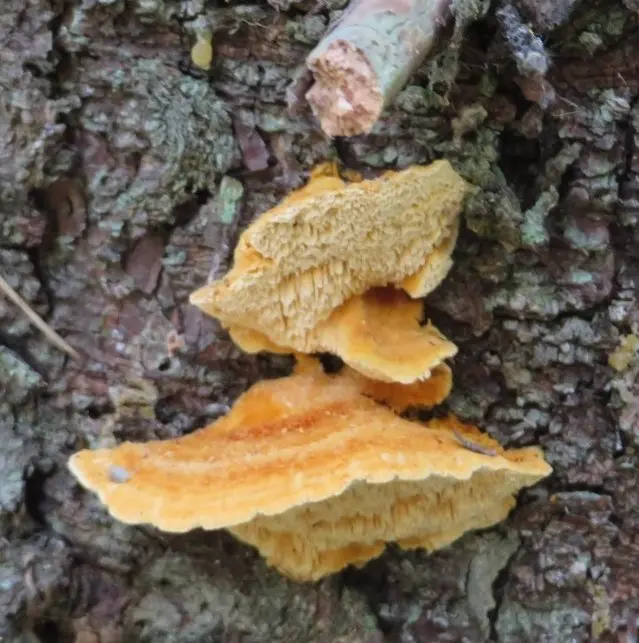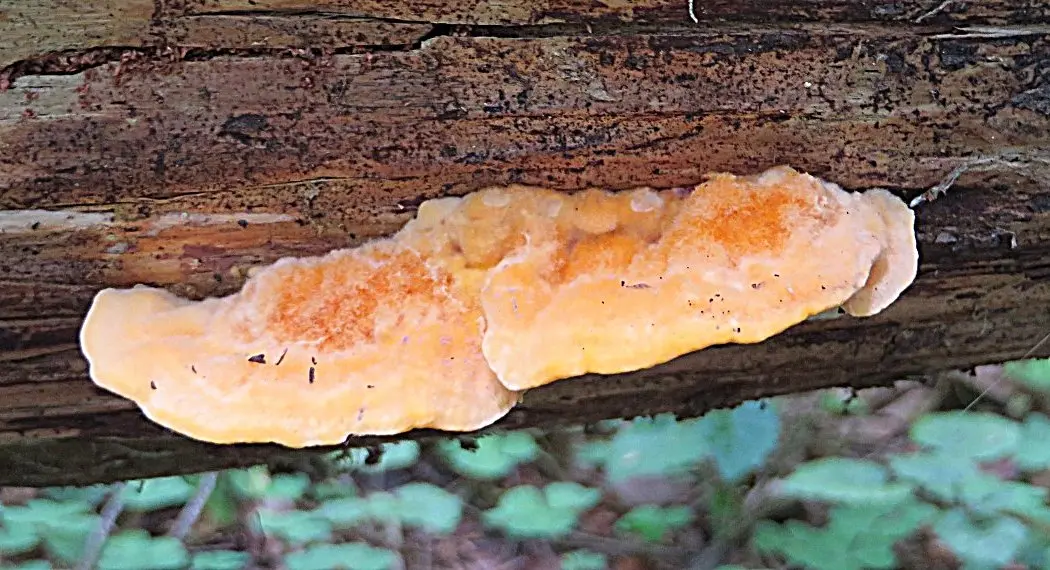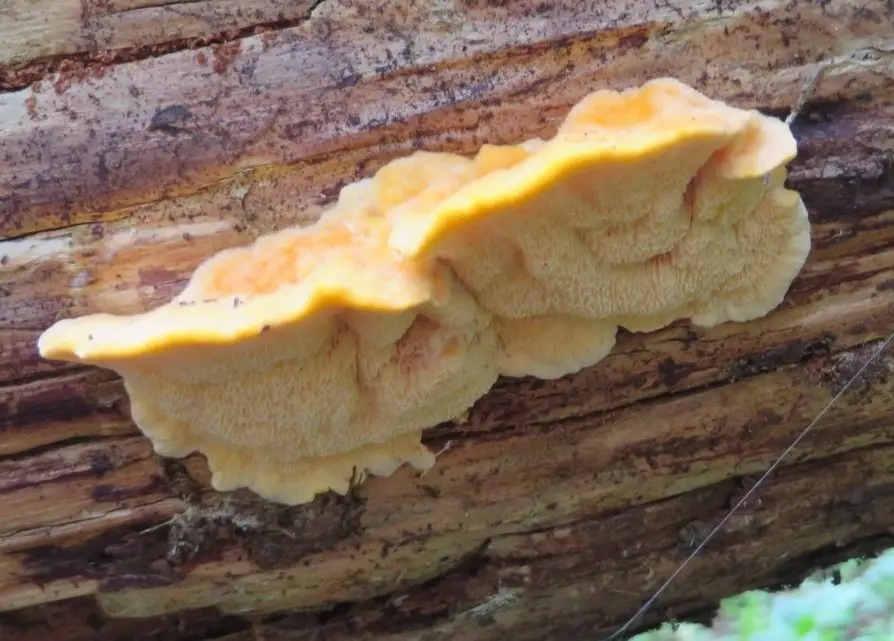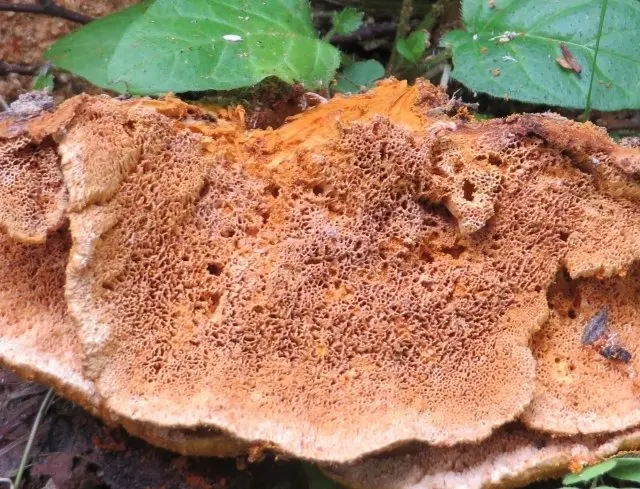Pycnoporellus brilliant (Pycnoporellus fulgens)
- Division: Basidiomycota (Basidiomycetes)
- Subdivision: Agaricomycotina (Agaricomycetes)
- Class: Agaricomycetes (Agaricomycetes)
- Subclass: Incertae sedis (of uncertain position)
- Order: Polyporales (Polypore)
- Family: Fomitopsidaceae (Fomitopsis)
- Genus: Pycnoporellus (Pycnoporellus)
- Type: Pycnoporellus fulgens (Pycnoporellus brilliant)
:
- Creolophus shining
- Dryodon shining
- Polyporus fibrillosus
- Polyporus aurantiacus
- Ochroporus lithuanicus

Pycnoporellus lustrous lives on dead wood, causing brown rot. Most often, it can be seen on spruce deadwood, on which the bark is partially preserved. Occasionally it is found on pine, as well as on alder, birch, beech, linden and aspen. At the same time, he almost always settles on deadwood, on which the bordered tinder fungus has already “worked”.
This species is confined to old forests (at least, to those in which sanitary cuttings are rarely carried out and there is deadwood of suitable quality). In principle, it can also be found in the city park (again, there would be suitable dead wood). The species is common in the northern temperate zone, but occurs infrequently. Period of active growth from spring to autumn.
fruit bodies annual, more often they look like imbricate sessile semicircular or fan-shaped hats, less often open-bent forms are found. The upper surface is colored in more or less bright orange or orange-brown shades, glabrous, velvety or gently pubescent (bristly in old fruiting bodies), often with pronounced concentric zones.

Hymenophore creamy in young fruiting bodies.

Old ones are pale orange, with angular thin-walled pores, 1-3 pores per mm, tubules up to 6 mm long. With age, the walls of the tubules break, and the hymenophore turns into an irpex-shaped, consisting of flat teeth protruding from under the edge of the cap.

Pulp up to 5 mm thick, light orange, in the fresh state of the consistency of a soft cork, sometimes two-layer (then the lower layer is dense, and the upper one is fibrous), upon drying it becomes light and brittle, upon contact with KOH, it first turns red, then blackens. Smell and taste are not expressed.
spore powder white. Spores are smooth, from cylindrical to ellipsoid, non-amyloid, do not turn red in KOH, 6-9 x 2,5-4 microns. Cystids are irregularly cylindrical, do not turn red in KOH, 45-60 x 4-6 µm. The hyphae are mostly thick-walled, weakly branching, 2–9 µm thick, remaining colorless or turning reddish or yellowish in KOH.
It differs from Pycnoporellus alboluteus in that it forms well-shaped hats, has a denser texture, and upon contact with KOH, it first turns red and then blackens (but does not become cherry). At the microscopic level, there are also differences: its spores and cystids are smaller, and the hyphae do not stain bright red with KOH.
Photo: Marina.









